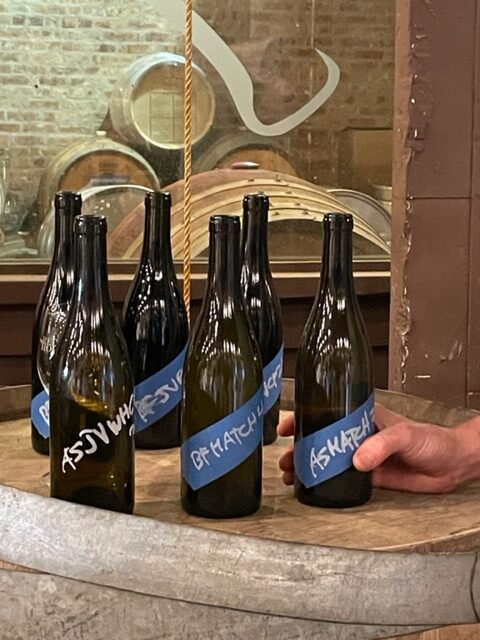The process of blending wine is very simple. First, I taste and analyze the six base wines (three white wines and three red wines) provided by the winemaker. The way to analyze the base wine is to use the Deductive Tasting Grid like when I am in class, and then I record it in the notebook, this is helpful for blending, so I can change the ratio of each blend based on these notes. After analyzing and taking notes, I have to start to decide what kind of blend I wanted to make based on my food items. The food items are white meat or salad will blend with white wine, and the food item with red meat or other spicy food will blend with red wine. My food item is red meat, so I will blend red wine. After that, I use the empty syringe to inhale each desired base wine in proportion to the glass. Then taste it to decide if this is what I want.
The final blend turned out to be what I expected, with each wine fully developed, with the Cabernet Franc offering leaner, saltier red fruit flavors. Petit Verdot will add more floral notes and tannins, as well as opaque color. Merlot adds complex peppery notes and a more vibrant finish. When I tasted it, I could smell the strong aroma, and when I drank it, I could feel the eyes bright, the fresh tangerine taste, and the mouth was full of saliva.
As for how to develop my final blend, I was thinking of having one wine as the main ingredient and the others as an auxiliary. Then I thought about using with 80% Cabernet Franc as the main body, 10% Petit Verdot, and 10% Merlot as the auxiliary. Because Cabernet Franc is the main body in many blends, Petit Verdot and Merlot are the auxiliaries. In conclusion, the blending process went very smoothly.






